The Scoop on Your Baby's Poop
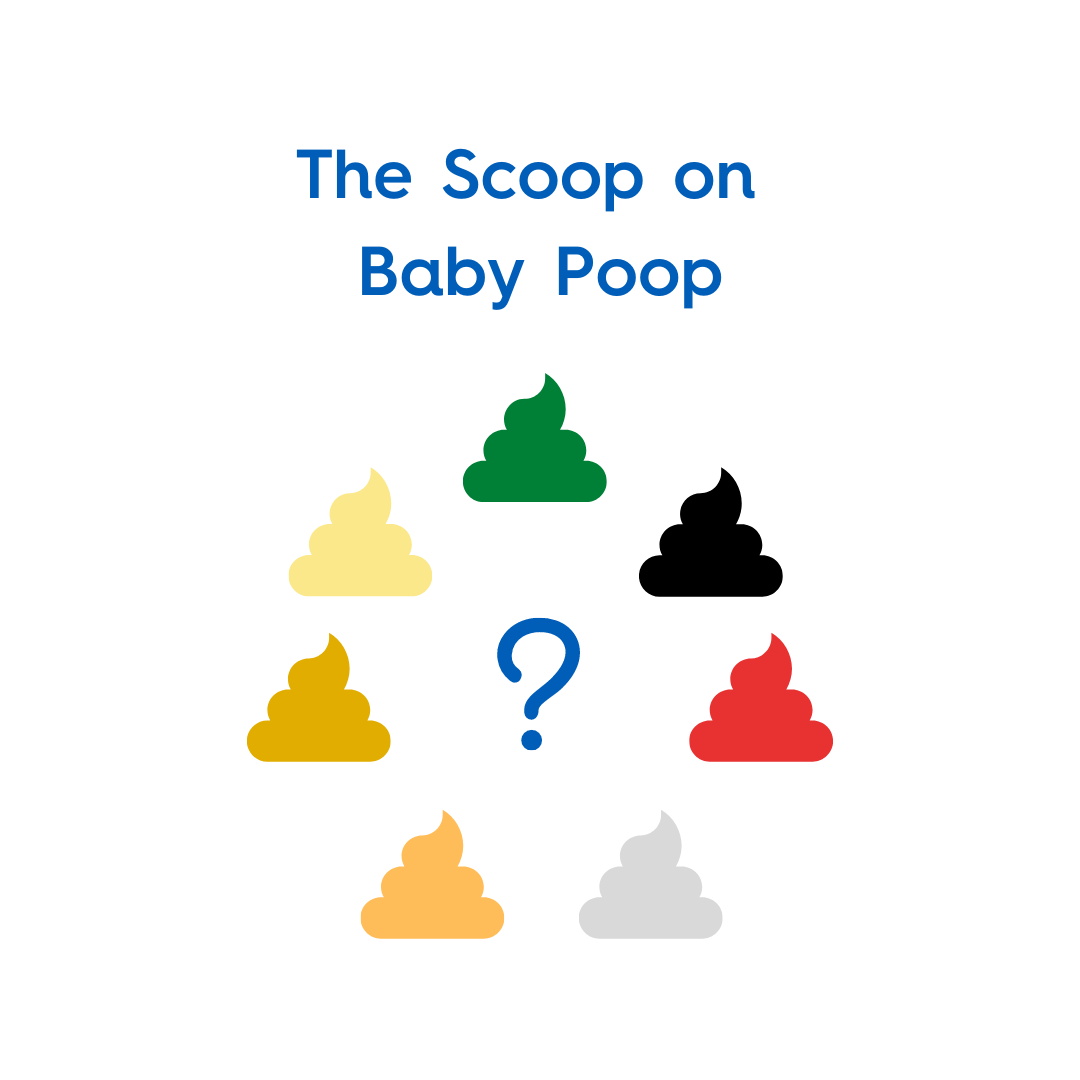
Have you ever found yourself asking why your baby’s poop looks the way it does? A baby’s stools can be different in color and texture depending on many factors. Your baby’s poop communicates a lot about your baby’s overall health. A baby’s stools will change as he or she grows, so it’s important to know what is healthy and what could be a potential warning sign.
Baby Poop Color Varies
1. Newborn Baby Poop
Did you know that newborns have a stool that resembles motor oil? It is greenish-black, tarry, and sticky. Newborn poop is called meconium and includes anything ingested in utero, such as amniotic fluid, mucus, or skin cells.
2. Breastfed Baby Poop
When a baby is breastfed, he or she will have mustard yellow, green, or brown stools. This can be seedy, pasty, and diarrhea-like. It also smells sweet.
3. Formula-fed Baby Poop
When a baby is formula-fed, he or she will have yellow or brown stools that resemble peanut butter. Babies that are formula-fed pass fewer (but more odorous) stools than breastfed babies.
The Colors of Baby Poop
1. Green
a. If your baby has green stools, you may have just given him or her an iron supplement. Green stools can also occur when introducing green, solid foods (like spinach, beans, and peas) into your little one’s diet.
b. In addition, green stools may be caused by an illness such as a cold or stomach bug. Green stools may also indicate diarrhea. Be sure to maintain your regular feeding schedule if breastfeeding as breastmilk provides antibodies to promote recovery.
2. Orange, yellow and brown
a. In both breastfed and bottle-fed babies, orange, yellow or brown poop is normal. No need to worry here!
3. Black
a. Black poop is normal for newborns up to one week old. If your baby is older than one week old and has black flecks in their stools, it usually means he or she has digested blood from a mother’s cracked nipple. This usually is not threatening to your baby, though it’s always a good idea to check with your doctor to be sure it isn’t a symptom of another underlying issue.
b. If your baby’s stool is completely black after one week of age, see a pediatrician.
4. Red
a. Flecks of red in your little one’s poop may be from tiny amounts of blood from cracked nipples.
b. If his or her stool is bright red, it may indicate a medical concern, such as an infection, allergy, or GI injury.
5. Grey or White
a. If you haven’t introduced solids, white or gray stools can be a sign that the liver is not functioning properly. Call your pediatrician immediately.
b. If your baby is starting solids, his or her stools may be gray depending on the food he or she eats.
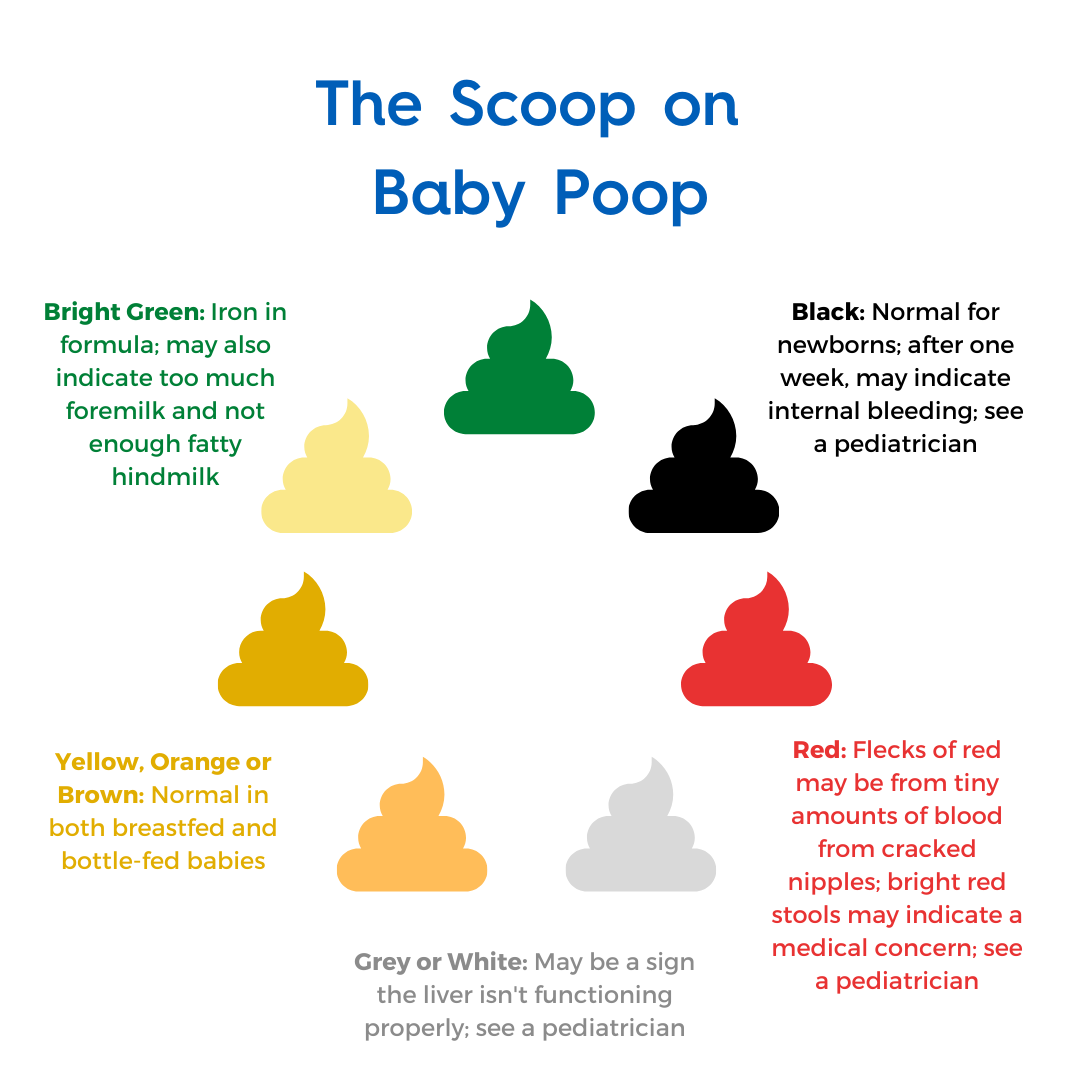
The Textures of Baby Poop
The texture of your baby’s stools in combination with color can tell you a lot about your baby’s health. Your baby's poop will have a different texture when he or she is first born versus when he or she begins eating solids.
1. Newborn Poop Texture
Newborns have a thick, tar-like stool. If your baby’s poop hasn’t become loose and yellow within a week of birth, talk to your pediatrician as this may be a sign he or she isn’t getting enough milk.
2. Breastfed Poop Texture
Babies who are breastfed have seedy, loose stools. It may seem like diarrhea, but it’s completely normal.
3. Formula-Fed Poop Texture
Babies who are formula-fed have firm stools that are tan, brown, green, or yellow. If your little one has infrequent and hard stools it may be a sign of constipation.
4. After Starting Solids
Once solids have been introduced, a baby’s poop will begin to look like normal, adult poop.
5. Diarrhea
If your baby’s poop is loose and watery after every feeding, he or she may have diarrhea.
Because a baby’s bowel movements are naturally looser, this may be difficult to determine. Talk with your pediatrician, if you’re unsure.
6. Constipation
If your baby’s poop is small, pebble-like, and dark brown, it may be a sign of constipation.
7. Mucus in Stool
When your baby is a newborn, it is normal to have mucus in the stool as they pass meconium or swallow his or her drool. After your baby is a few days old, the mucus should subside if your little one is not drooling. If mucus in the stool persists, it may be due to diarrhea. Talk with your pediatrician if mucus in your baby’s stool persists.
8. Blood in Stool
When a baby is straining during constipation, there may be blood in his or her stool. Small amounts of blood may also be ingested if your nipples are cracked and bleeding. Blood in the stool can also be a sign of an infection, so it's important to contact your pediatrician.
Probiotics for a Healthy Gut and Stool Regulation
Probiotics can also help regulate your baby’s stool. Colic Calm Probiotic is a daily probiotic to support infant and child gut and digestive health. Specifically formulated with five key strains, Colic Calm Probiotic helps with colic and intestinal issues.
Daily probiotics benefit digestive wellness by promoting good bacteria in the gut. Good bacteria can help with stool regulation. By administering a daily probiotic to your baby, you can help balance his or her digestive system and promote healthy stools.
In summary, your baby’s poop will vary in color and texture as he or she ages. If you are ever concerned about the way your baby’s stools look, always contact your pediatrician.
 Canada
Canada South Africa
South Africa UK
UK EU & Int
EU & Int Ireland
Ireland Australia
Australia Brazil
Brazil New Zealand
New Zealand



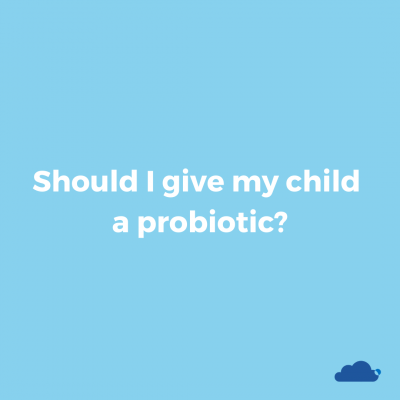

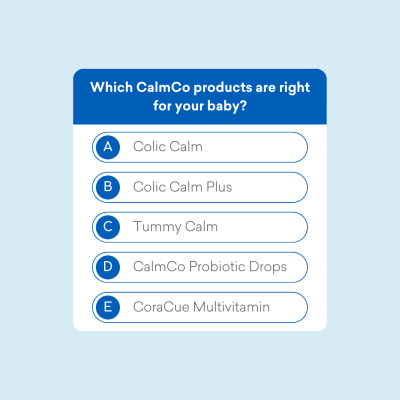
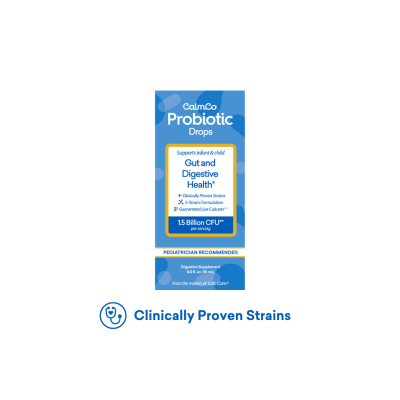





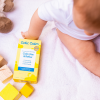



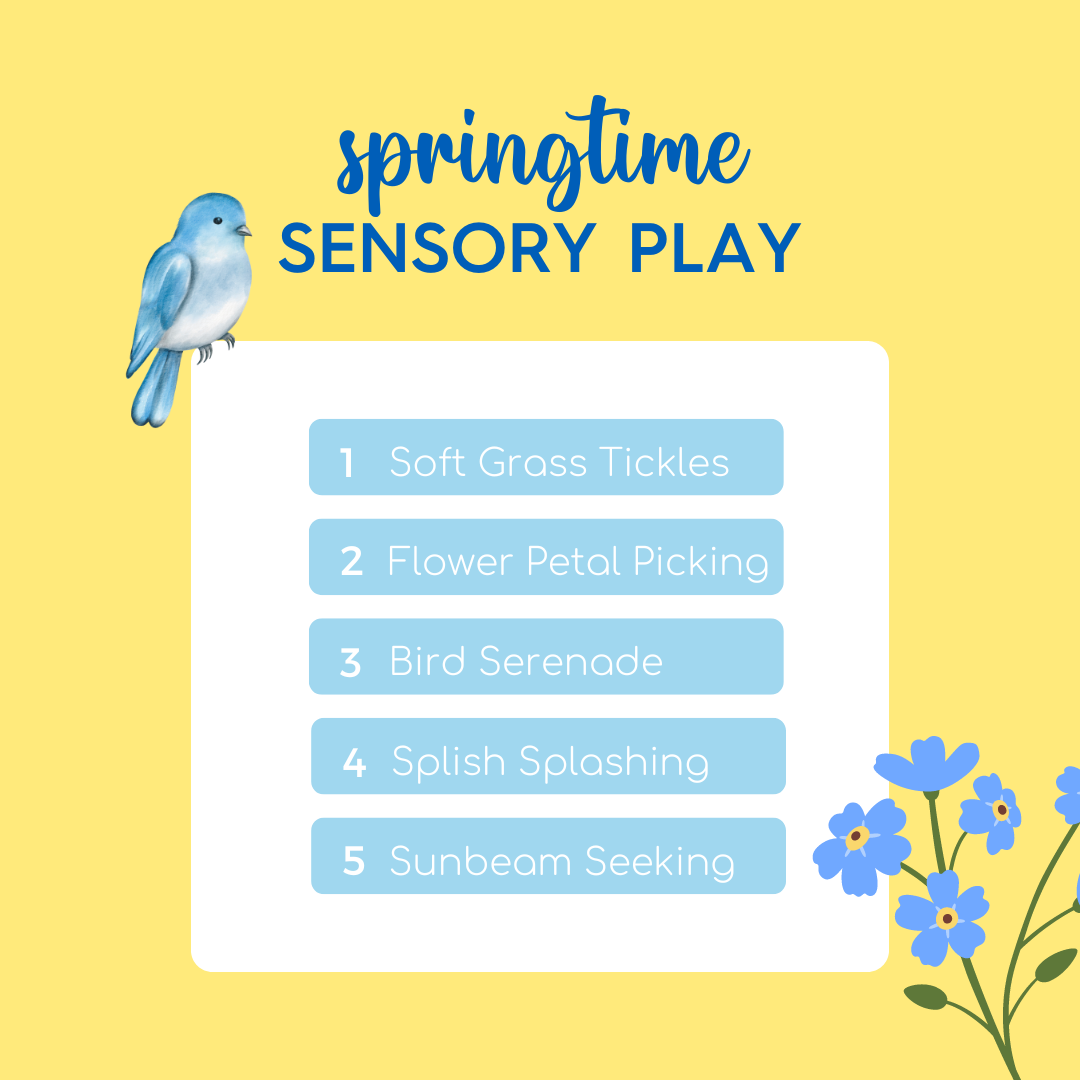

Comments